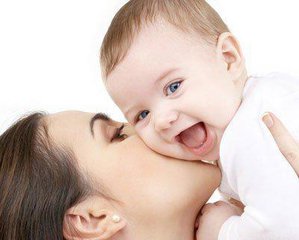(单词翻译:单击)
听力文本
A new study has found that mothers all over the world speak to their babies in the same way. The research is from the Baby Lab at Princeton University in the USA. The researchers who did the study said "motherese" is a universal language. They said baby talk is not just lots of cute noises and coochy-coos. The words and sounds that mothers say to their babies are quite complex. They form a special form of communication that mothers use in the same way across the world. These sounds are very important in helping the language development in infants. Dr Elise Piazza, co-author of the research, said baby talk is a lot more important than we thought. She said: "It is not something to be embarrassed about at all."

The researchers recorded 24 different mothers talking to their babies. The babies were aged between seven months and one year. The mothers spoke to their children in 10 different native languages, including English, Spanish, Mandarin, Russian and Hebrew. Dr Piazza said: "We basically brought mothers into the lab and had them play with and read to their own babies, just like they would at home." She added: "We found that mothers [change the] basic quality of their voices when speaking to infants, and they do so in a [very similar] way across many diverse languages." The study didn't look at fathers' talk, but Piazza said that it is likely fathers would also speak in a similar way across the world.
译文由可可原创,仅供学习交流使用,未经许可请勿转载。
重点解析
1.We basically brought mothers into the lab and had them play with and read to their own babies, just like they would at home.
play with同…一起玩
The young girl loved to play with her playmates.
这个小女孩喜欢和她的伙伴一起玩。
2.Dr Elise Piazza, co-author of the research, said baby talk is a lot more important than we thought.
a lot修饰比较级
可修饰比较级的词
1)a bit, a little, rather, much, far, by far, many, a lot, lots, a great deal, any, still, even等
2)还可以用表示倍数的词或度量名词作修饰语。
3)以上词(除by far)外,必须置于比较级形容词或副词的前面。
参考翻译
一项新的研究发现,世界各地的母亲对婴儿说话的方式都是一样的。这份研究来自美国普林斯顿大学婴儿实验室。研究人员表示,“妈妈语”是世界通用的语言。他们表示,儿语不仅仅是许多可爱的发音和呢喃。母亲对婴儿说的词语和发出的声音非常复杂。它们构成了一种特别的交流方式,世界各地的母亲通用。这些声音对于帮助了解婴儿的语言发展非常重要。该研究联合作者Elise Piazza表示,儿语比我们认为的更加重要。她说:“这完全没有什么好尴尬的。”
研究人员录下了24个不同的母亲对婴儿说话。这些婴儿的年龄在7个月到1岁之间。这些母亲用10种不同的方言对婴儿讲话,包括英语,西班牙语,普通话,俄语和希伯来语。Piazza博士表示:“我们只是把母亲们带到实验室里,让她们和自己的宝宝玩,自己跟他们说话,就像在家里一样。”她补充说:“我们发现,母亲在对婴儿说话时会不自觉地改变音量和音调,各种不同的语言都是这样。”这份研究没有分析父亲的语言,但是Piazza表示,世界各地的父亲很有可能也是以类似的方式对婴儿说话。


